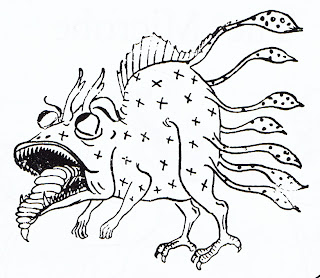I recently read Quiet, by Susan Cain, in which she says in passing that the word personality didn't come into the English language until the rise of what she calls the Extrovert Ideal. Obviously I couldn't come across a linguistic assertion like that without becoming curious. So, what is the history of personality in our language?
Well, first of all, we've had the word since the late fourteenth century, but at that time it meant "the quality or fact of being a person," what we might now call "personhood." The meaning we use now is "the visible aspect of one's character as it impresses others." This sense is first attested at the very end of the eighteenth century, and didn't become common until the mid-nineteenth century, precisely when the concept of "having a good personality" became valued.
It's hard to imagine a world in which people didn't talk about personality, but when you think about it it starts to make some sense. In a world where everyone lives in the same village with the same people for their entire lives, everyone knows that Jane may be quiet but she's a real leader in a crisis, or that John never smiles but is generous to everyone, or that Jack smiles all the time and tells great jokes but is irresponsible and not to be trusted. Now consider the changes caused by the Industrial Revolution, when people are moving to cities, coming and going, applying for jobs with people who haven't known them their entire lives… Suddenly personality matters: that "visible aspect of one's character as it impresses others." Now Jack, with his great personality, is the one who gets the job, while John, who has the better character, is considered dour and unimpressive. At any rate, that's the gist of Cain's take on the phenomenon, and I'm pretty convinced. But back to the words…
The meaning of personality as a person's distinctive presentation to the world becomes stronger and stronger as time goes on. By 1889 we have the usage of a personality being someone whose personality makes them stand out from that of others, as we now talk about "TV personalities." In other words, the personality is no longer just an outward aspect of a larger inner character - it is the entire person. And by the middle of the twentieth century we talk about the cult of personality. Simultaneously, the word charisma, which originally had to do with divine talents bestowed by God, was moving by the mid-twentieth century toward our modern meaning of "personal charm," or "attractive or magnetic personality."
Does this mean that there were no personality cults before that phrase was coined, or that no one was ever impressed by personality before the nineteenth century? Of course not; people could use other words to describe the concept, or feel it without talking about it at all. But it does give some interesting food for thought. It tells us that personality may not be as vital a concept as we believe, and that there are modes of thought that look more toward substance than image. It reminds us not to place too much faith in superficial charm, but to push ourselves to get to know other people in a deeper way. It also shows us how the changes in words' meanings can sometimes point to much larger, deeper societal shifts. So pay attention to the changing words around you and ask yourself what our words are telling us about ourselves.
[Picture: Six Masks, rubber block print by AEGN, 1999.]






















